
14 Books and Activities To Help Your Kids Learn from Mistakes
THIS ARTICLE INCLUDES A FREE PRINTABLE
As parents, we want our kids to understand that mistakes are where the real discoveries are made. We want them to be courageous, take good risks and not be afraid to fail.
Yet, so many children avoid mistakes and failing at all costs. As a result, they don't spend enough time trying new things and miss valuable learning opportunities.
Luckily, there are certain things we can do to make sure our kids are open to making mistakes and learning from them.
But sometimes we need help to reinforce the message. I’ve compiled a list of books and activities for kids ages 5 and up that provide just the lift they need to get over those bumps in the road to success.
PIN FOR LATER

BOOKS
Ages 5-8
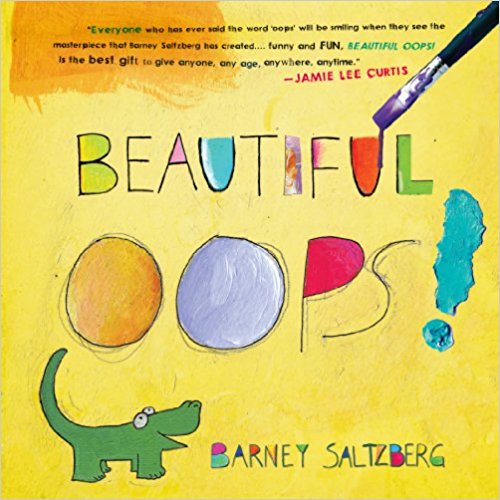
A great book by Barney Saltzberg for younger kids. It’s full of tactile page lifts, pop-ups, holes, and crumpled pages. The book demonstrates how to take a mistake and turn it into something beautiful. It embodies the philosophy of the American painter, Bob Ross: “There are no mistakes, only happy accidents.”
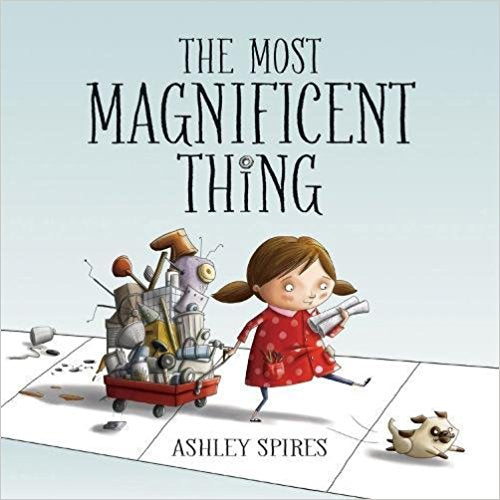
This is a new classic by Ashley Spires that is targeted towards girls, but was also well received by my 8-year-old boy. The book follows a girl and her dog through the trials and tribulations of making a Most Magnificent Thing. She fails repeatedly and becomes discouraged enough to quit.
Thankfully, on a long walk, her dog talks her into trying again and this time she succeeds. The notes from the publisher say this book is also great for inspiring kids to make their own STEM inventions.
The Girl Who Never Made Mistakes
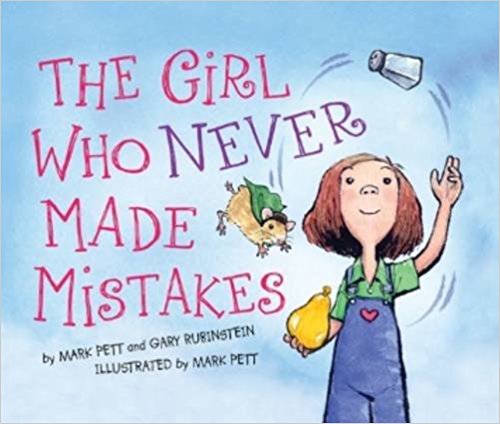
In this book by Mark Pett and Gary Rubinstein, we meet Beatrice Bottomwell, the girl who never made mistakes. Suddenly, one day she makes a huge mistake, in front of every body!
This book is great for those children who are on their way to becoming perfectionists or who find themselves immobilized from trying anything new because they might mess up. And it’s told as a fable so it comes across as a fun story and isn’t preachy.
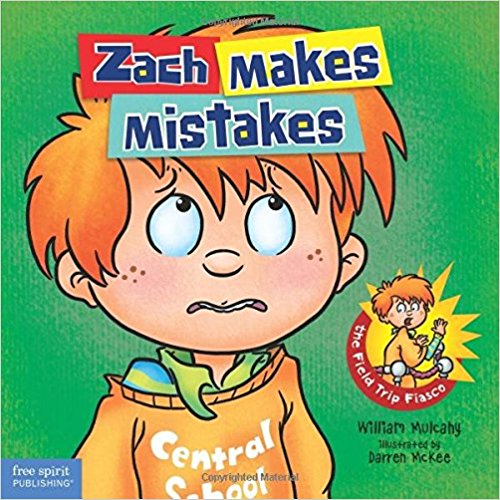
This is part of the Zach Rules series of books by William Mulcahy that help children learn about how to handle different emotions and situations, such as how to apologize or handle frustration.
I loved this book because it introduces Appreciative Inquiry – a technique I use in organization development to grow from mistakes - in a child-friendly way.
Children follow Zach through a field trip at the museum and learn how to Detect, Correct, and Reflect on the different mistakes Zach makes during the day.
There is even a section in the back of the book that gives you, the parent, tips and activities you can use with your kids.
Ages 9 and up
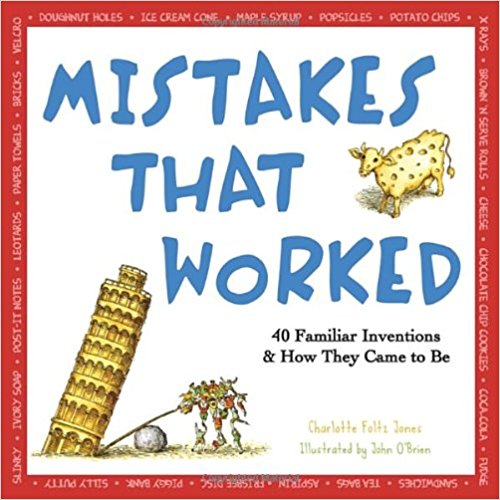
This book by Charlotte Foltz Jones is marketed to a younger age group, but my 12-year-old son loved it, too.
Mistakes that Worked tells the stories of all these successful inventions, like bricks, tea, and Scotchguard, and other products that were actually mistakes.
This hooks kids who are into facts and trivia and conveys the subtle message that mistakes can be glorious successes in disguise.
Star Wars: Jedi Academy Series

This is a series of books by Jeffrey Brown (first 3 books) and Jarrett J. Krosoczka (current series). This is an unorthodox pick because it doesn’t deal overtly with teaching learning from mistakes like some of the other picks.
However, the main heroes overcome a myriad of obstacles including making mistakes (particularly the 2nd book in the original series), dealing with bullies, and coping with ups and downs of growing up.
My boys found inspiration from the stories and the lessons (I think both of them have read each of the books about 20 times). The fun format of diary entries, hand-drawn pictures, and school clippings - very similar to the Diary of a Wimpy Kid series -will entice even the most reluctant readers into cracking open the cover.
Sometimes You Win, Sometimes You Learn - For Teens: How to Turn a Loss into a Win
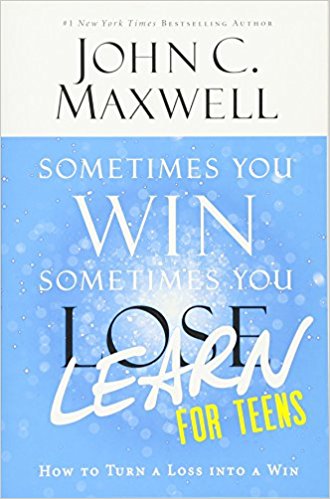
John C. Maxwell has been writing books about leadership, teamwork, and relationships for over 30 years. In this book, he uses his considerable experience on how to help teens see failures as opportunities.
He includes stories about his own mistakes along with thought exercises and activities for your tween and teen to complete in the book or in a journal. This is more of a self-improvement book than my two previous picks.
To be effective, your child will need to accept that they have an issue handling mistakes and be willing to do the work this book advises. This can be hard for some kids and if they do the work they will see incredible improvement in their grit.
ACTIVITIES (All Ages)
Failures that Succeeded
One way to turn mistakes and failures into something positive is to introduce your child to other people's failures. There are endless examples of how famous people failed before they succeeded.
For example, your kids might be interested in learning that J.K. Rowling was rejected numerous times when she tried to publish the first Harry Potter book or that Walt Disney was turned down over 300 times before he received financing to create Disneyland.
Encourage your child to do research on how someone he admires once failed. You can use the book Mistakes that Worked (mentioned above) for inspiration or watch this YouTube video together.
Once they're done with their research ask them to tell you about it at the dinner table or any other family gathering. Have a discussion around what made these people persevere and not give up.
Mistake of the Day
When we have dinner as a family we talk about our day. Specifically, we entered into the habit of asking the kids two questions:
What was your favorite thing today?
What was one MISTAKE you made today?
Sometimes we get groans and eye rolls, but mostly we get either thoughtful or silly answers. The boys know that they have our complete attention and they can say anything without criticism or judgment.
This activity is particularly important as kids begin to realize that mistakes are expected every day.
My Favorite No
I recently discovered this popular video by Leah Alcala, a middle school math teacher in California. In the video she describes her approach to her students' mistakes:
She posts a problem on the board for the children to complete on an index card. After the students are done solving the problem, she collects the cards and searches for her favorite wrong solution.
This can be adapted to a home setting. For example, when you are reviewing your kid's homework analyze their mistakes to discover your favorite mistake. Then tell them WHY it is your favorite.
Talk about where the work was almost right and the spot where the mistake happened. It starts with positivity and let’s them know that their attempt wasn’t wasted.
This activity also helps you, as the parent, to see beyond getting it right or wrong.
Journaling
I’m a big proponent of journaling. Keeping a journal gives me a place to sort my thoughts and flesh out ideas.
For kids it can be a safe place to write about and process their mistakes. One such ready-made journal is My Beautiful Book of Oops. It is a journal meant to go along with the book Beautiful Oops! mentioned above.
The journal gives permission for mistakes to be made: the pages are to be smeared, bent, ripped, and splatted on. It creates a safe place for self-expression, creativity, and mistakes.
Reframing
Jessica Alexander, the author of The Danish Way of Parenting: a guide to raising the happiest kids in the world, recommends reframing as a way to help kids change how they look at the mistakes they make.
Reframing is taking the negative way we see a situation and flipping it around to highlight the positive. Here's an example.
The other day my youngest was riding a bike after not having been on one for months. Right as he was getting home he crashed into a bush and fell off. I held him as he cried and listened to him as told me about his fall. Then I reframed it by saying,
“I saw you fall. When you knew you were about to fall you tried to get your leg out to brace yourself. That shows that you have learned a lot about how to balance a bike.”
It changed the entire experience for him. The next day he was eager and excited to get back on his bike and go out for an even more challenging bike ride.
Thinking Hats
A friend of mine uses Edward de Bono's thinking hats, a technique which helps children visualize the thinking process going on in their heads. You can buy hats in each color and make the thinking physical, too.
When a mistake or a failure occurs, put on your BLUE hat. Ask yourself, where am I now and what opportunity can I pull out of this situation? The opportunity is a present, a chance to become stronger and try again without giving up.
Now you are ready to put on your GREEN hat and devise a creative plan to try again. Before you carry out this plan you will look at the positives and negatives of the green hat plan. These are the YELLOW and BLACK hats.
Finally you pop the RED hat on and ask yourself: How does this make me feel? The great thing about the red hat is that there are no wrong answers. This helps keep defensiveness from creeping into the process.
The hats start waking up resilience in our children. They turn something that was once abstract into something tangible and pliable.
A Challenging Project
Nothing builds grit and resilience like a challenge. Ask your child,
“Is there a challenge or a project that would make you really proud of yourself if you did it?”
Ask how they would like to be supported. However, avoid saving them from failing. If they do happen to fail, help them think through how and why they failed using the following Appreciative Inquiry questions:
- What happened? The whole story!
- What did you do well?
- What could you have done better?
- What do you think you can do next time to make this work better?
- When will you try again?
Ask them to write down a date when they will try again. This will help them stay on track on their path to success.
---
Using these books and activities will help your children be more open to making mistakes and learning from them!

